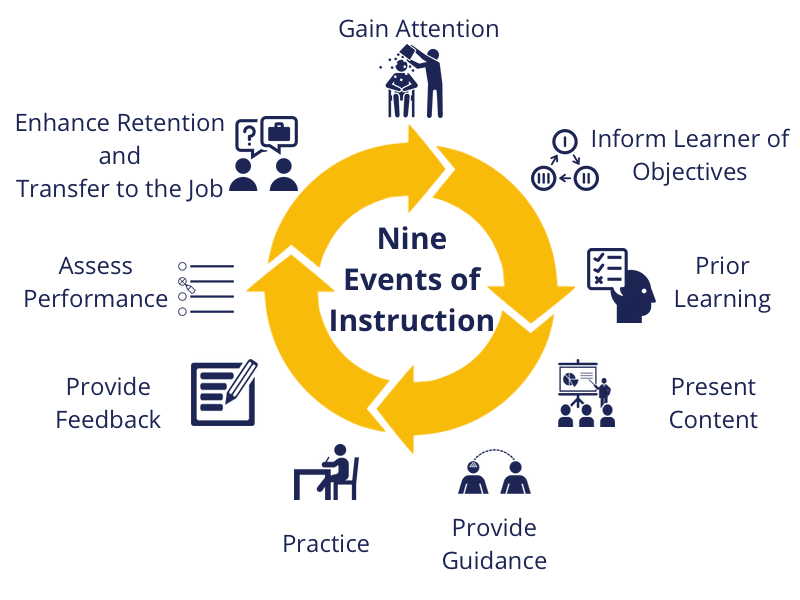Gagne’s Nine Events of Instruction
Robert Gagne proposed a series of instructional events. These events follow a systematic instructional design process, creating a flexible model where events can be adapted to cater to different learning situations. It is one of the most used instructional design models as it provides a sound structure for developing effective learning. The nine steps are:
- Gain attention of the students — Use stimuli that catch and engage their brain (novel ideas or thought-provoking question, etc.).
- Inform students of the objectives — Establish the expected outcomes and criteria for measuring achievement.
- Stimulate recall of prior learning — Leverage existing knowledge before introducing new knowledge and build on it.
- Present the content — Deliver the content in easily consumable chunks.
- Provide student guidance — Guide them with examples, case studies, and other instructional support to supplement the content.
- Elicit performance — Engage students with different activities that recall, utilise, and evaluate knowledge.
- Provide feedback — Reinforce knowledge with immediate feedback (informative, remedial, corrective, etc.).
- Assess performance —Test their knowledge with established (and transparent) criteria.
- Enhance retention and transfer to new contexts — Use content retention strategies (concept maps, rephrasing, summarising, job aids, etc.).

Last modified: Monday, 18 November 2019, 3:55 PM